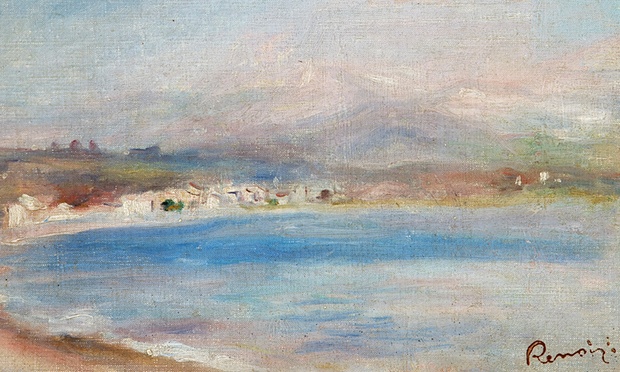
Despite its controversial past, a UK panel rules that Pierre-Auguste Renoir‘s The Coast of Cagnes will remain the property of the Bristol City Council.
The Spoliation Advisory Panel, which reviews claims for cultural objects at British institutions that may have been sold by Jewish owners under duress in Nazi Germany, has determined that the Renoir canvas was sold due to debt, rather than pressure from the authorities.
An unknown buyer purchased The Coast of Cagnes in 1935 at an auction in Berlin, from Margraf & Co., a Berlin art dealership owned by Jakob and Rosa Oppenheimer from 1929 – 1937. When the Nazis seized power in 1933, “systematic anti-Semitic harassments and violence were unleashed upon the Oppenheimers,” reports the panel.
The Oppenheimers quickly fled to France, and the Nazis attempted to collect inheritance taxes on the sizable estate of the previous owner, Albert Loeske, who transferred his business to the couple when he died in 1929. Loeske’s fortune was estimated to be approximately £5-10 million, according to a 1931 report by the Canberra Times.
The Renoir was among the works sold at auction to reportedly settle this debt. However, the report notes, “there is no evidence as to the price the Painting achieved at auction, and no conclusive evidence of what happened to the proceeds of the sale. Without more, it is a matter of some speculation that the proceeds were paid to the tax office in order to discharge the tax debt levied on the Oppenheimers following their inheritance from Mr Loeske.”
A postcard of Margraph & Co. in Berlin.
Photo: Courtesy delcampe.net.
Jakob died in France in 1941, and Rosa was later killed at Auschwitz concentration camp in Nazi-occupied Poland, though their three children survived.
The Spoliation Advisory Panel’s report reviewed this evidence and concluded that “in all the circumstances, the panel finds that the moral strength of Margraf’s claim is insufficient to justify a recommendation that the painting be transferred or that an ex-gratia payment be made,” reports the Guardian.
Leopold Moller, the last owner of the painting, escaped Germany in 1939, and bequeathed it to the Friends of Bristol Art Gallery when he died in 1999.
The Spoliation Advisory Panel’s decision is surprising, but not without precedent. This past spring, a German panel found that the sale of the Guelph Treasure in 1935 by a quartet of Jewish art dealers “can not be considered a forced sale.” The ownership dispute remains ongoing.
Although almost 50 countries have pledged to support efforts to return Nazi-looted artwork and valuables to their rightful owners and heirs, the Conference on Jewish Material Claims Against Germany and the World Jewish Restitution Organization have found such efforts lacking.
Related Stories:
Germany Restitutes Matisse and Liebermann Artworks From Gurlitt Collection
Oxford’s Ashmolean Museum Returns Nazi Loot
Painting Stolen by Nazis Returned to Estate of Jewish Art Dealer
Nazi-Looted Porcelain Returned by V&A Museum Now Up for Auction